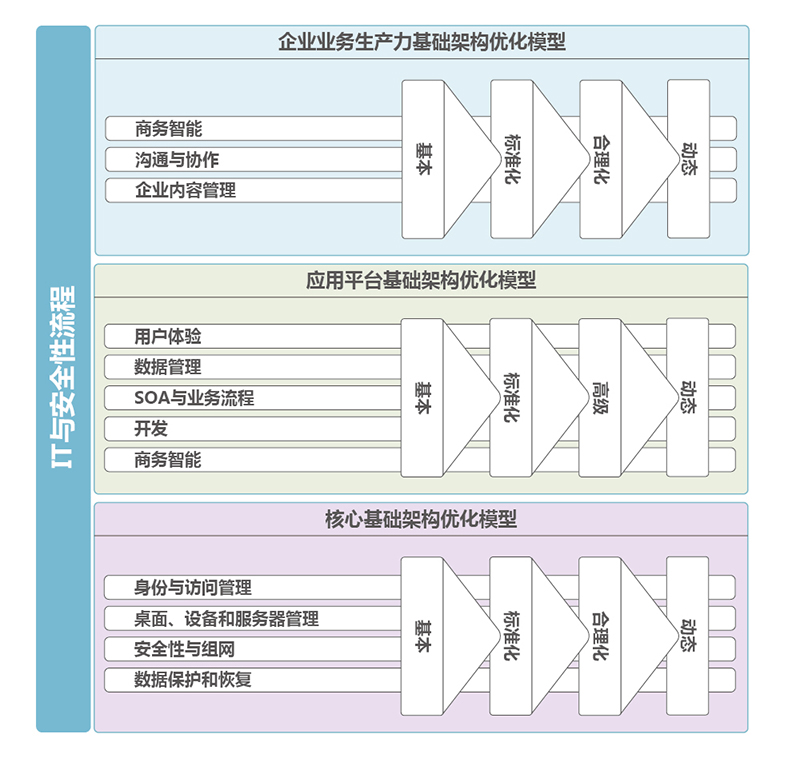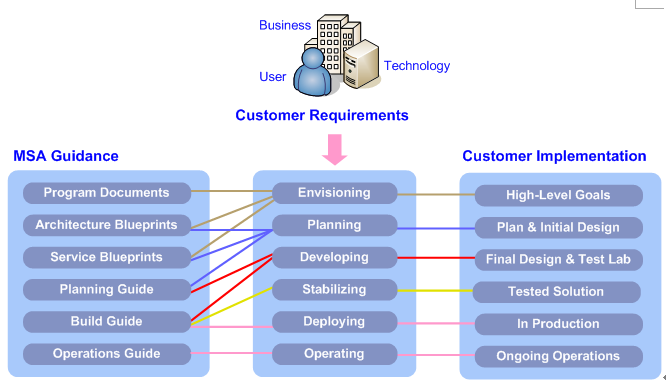

Enterprise informatization is based on microsoft solution system design and implementation services

With the advancement of informatization, more and more business processes in enterprises are solidified through information systems such as ERP, and data is stored in databases in existing formats in a structured manner. However, there is still a large amount of unstructured data, which exists in the user terminal in the form of daily office software and is shared within the enterprise through the network. For enterprises with rapid change or continuous improvement, this challenge is often exacerbated by the inability of information systems to solidify faster than the changes in the business processes. Based on Microsoft's IOM, MSA and other methodologies, Beiming Software has launched Microsoft solution architecture services to help enterprise CIOs overcome this challenge.


The architecture mainly involves various solutions for enterprise IT infrastructure and employee business productivity, such as the following aspects:
1. Basic network service level
2. Core directory service level
3. File storage, transfer, export
4. Unified communication

Beiming Software's Microsoft solution architecture services help enterprises in the face of separated IT infrastructure and unstructured data that is difficult to manage. It provides a series of targeted solutions to help enterprises achieve a stable, efficient and integrated information architecture. The main values are reflected in:
Building reliable underlying network services to run discrete information components on a unified underlying service
Building a unified and secure directory service to unify the management of informatized user accounts and terminal policies, and review relevant security requirements.
Building efficient and easy-to-use file services to effectively aggregate unstructured data to the data center in the easiest and most efficient way, and achieve secure backup and output.
Building an easy-to-use, unified communication system to achieve a high degree of integration between various user terminals, between structured and unstructured systems, and between different forms of communication, greatly improving employee efficiency.

1. Enterprise mail system implementation project for an energy group
2. Catalog service planning and implementation project for an energy group
3. Document service planning and implementation project for a multinational
4. Unified communication system planning and design project for a design institute under CNPC
5. IT infrastructure optimization implementation project for A chemical group